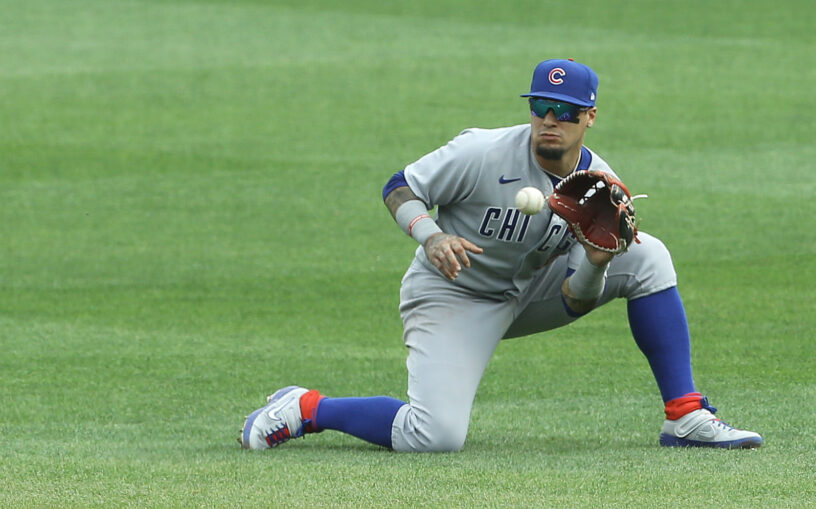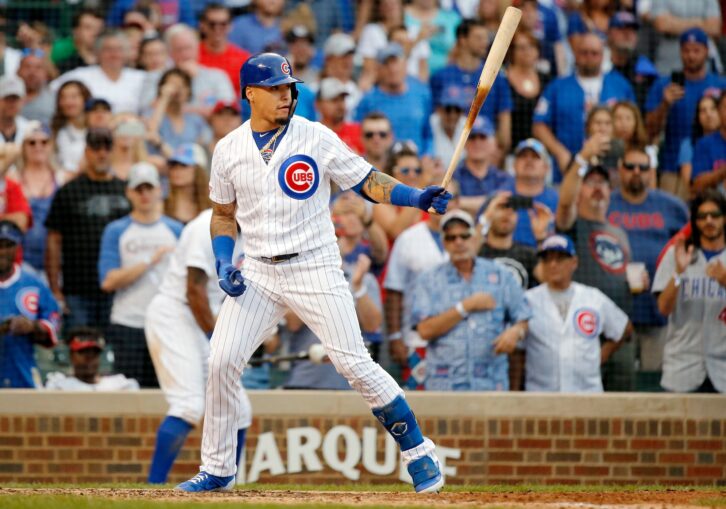
Credit: Charles LeClaire-USA TODAY Sports
After finishing just short of qualifying for the postseason for the first time since 2016, the New York Mets will be doing everything they can to participate in meaningful October baseball next fall, which will likely include addressing the left side of the infield.
As currently constructed, the Mets have a ton of uncertainty regarding their third base and shortstop positions for next season, as both of those starting roles remain up for grabs and each of them could benefit from an external acquisition. While the front office is focused on adding impact players to the club’s starting rotation and center field spot, it’d also be wise for them to attempt to land an infielder of that caliber before this offseason concludes.
Considering the Chicago Cubs are looking to rebuild and unload their high-profile stars, they might serve as the perfect trading partner, especially since their ownership appears to value shedding payroll more than receiving top young players who are close to making an impact at the major league level. Since they recently sent pitcher Yu Darvish – who was a finalist for the 2020 NL Cy Young award – and catcher Victor Caratini to the San Diego Padres for Zach Davies and four teenage prospects, this could be the perfect time to take another superstar off their hands.
With that in mind, it’d make plenty of sense for the Mets to explore what it’d cost to acquire shortstop Javier Baez – who’s set to become a free agent next offseason – from the Cubs this winter. Though the organization has also considered making a run at Francisco Lindor, who could also significantly improve their shortstop position in 2021, there’s a very good chance it’ll cost them much less to trade for Baez than trying to negotiate a deal with the Cleveland Indians.
Adding to this, team president Sandy Alderson kept a close eye on the 28-year old infielder during his first stint in Queens, as he attempted to acquire him back in 2014. While he was unsuccessful in his pursuit back then, that might not be the case this time around, although it’s not like he’d be willing to mortgage the future of the franchise to land one of the top shortstops in the majors.
So what’d be the right price to bring Baez to New York? And what’d this acquisition mean for infielder Andres Gimenez?

Well, the Mets would definitely need to absorb his entire contract, which MLBTR projects to be in the range of $10-$12 million. As for which players they’d need to send the other way, all 10 of their top 30 prospects, according to MLB.com, should probably be off the table for this type of trade. Instead, management could create a package involving pitchers Junior Santos (19), Daison Acosta (22), along with a low-level third baseman prospect.
Even though Alderson and his staff would prefer to solely add through free agency rather than the trade market this offseason, sending this offer, or one similar to it, wouldn’t create any major damage to the team’s minor-league system, as Santos would be the only top 20 prospect leaving the organization.
Despite enduring a historically poor offensive performance last season, where Baez produced the lowest BABIP (.262), wOBA (.256), OPS (.599), and wRC+ score (57) of his career since 2014, it seems a change of scenery could help him get back on track next season. Along with departing the “Windy City,” playing more than just 59 games should also help him improve off his disappointing showing, especially since it seems he was a little unlucky at times in 2020.
Without question, there’s no excusing the two-time All-Star’s 31.9% strikeout rate, 38.0% whiff rate, and career-low 3.0% walk rate from last season, but he was still able to generate a ton of hard contact – posting a 40.3% hard-hit rate and an 8.1% barrel rate. While the majority of balls that he put in play were on the ground, as he recorded a 49.7% GB rate, the 2018 NL Silver Slugger award winner still found a way to spread them all across the field, particularly against left-handed pitchers.
Despite only receiving 59 plate appearances against lefties in 2020, Baez certainly tried his best to make the most out of his small sample size, producing a 22.5% LD rate, 40.0% GB rate, 37.5% FB rate, 35.0% pull percentage, 30.0% opposite percentage, and a 37.5% hard-hit rate.
Unfortunately, his efforts to create hard contact and direct the ball to all parts of the field against left-handers proved to be ineffective, as he only produced four doubles, two home runs, seven RBIs, .182 ISO, .263 BABIP, .277 wOBA, a 70 wRC+ score, and a slashing line of .218/.254/.400/.654. That being said, his results would’ve likely improved over a full season.
Unlike his performance at the plate, Baez maintained his strong defensive showing at shortstop last season, which is certainly an aspect that draws the Mets’ attention as they must improve their run prevention this offseason. Though he only became an everyday player at that position in 2019, the native of Puerto Rico has quickly developed into one of the top defenders in the game.
Starting in 2019, the 2016 World Series champion compiled 1,116 2/3 innings, finishing with the highest OAA (18), tied for the most DRS (26), the second-highest UZR (10.0) and defensive fWAR rating (15.7), the fourth-highest UZR/150 (9.5), and tied for the fourth-highest RngR (3.0) among all qualified shortstops in the majors, according to FanGraphs.com.
Over his 469 1/3 innings last season, the 2020 NL Gold Glove award winner recorded a 4 OAA (tied for third-highest), 7 DRS (third-most), 2.7 defensive fWAR rating (tied for ninth-highest), 0.4 UZR (tied for ninth-highest), 1.7 UZR/150 (tied for eighth-highest), and a 0.2 RngR (tied for sixth-highest).
Based on these recent results, not only would the Mets be acquiring a reliable defender, but this move would also allow Gimenez – who posted a 2 OAA at shortstop and second base, along with a 1 OAA at third base during his rookie campaign – to serve as a utility player next season.
Unless the front office wasn’t confident in their ability to re-sign Baez, which would definitely need to be addressed before finalizing any potential trade for him, the right-hander appears to be a solid fit for the direction of where this team is heading. Since he won’t cross over the age-30 threshold until the 2023 campaign, the elite defender could become an integral part of this club’s core over the next several seasons.
With lots remaining in the tank before he truly starts declining, buying low on Baez this winter has the potential of significantly benefiting the Mets long term, as generational players like him aren’t usually available for such a low asking price. Making this move, for the right price of course, could serve as one of their most meaningful transactions of the entire offseason.















